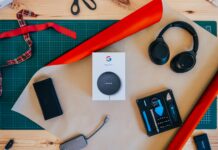The Nexus and Pixel lines of Google’s smartphones both use this multi-frame HDR approach to increase dynamic range and lessen ghosting when taking ordinary pictures. HDR+ photography has long been a tentpole mode on Google’s phones.
Kuba Wojciechowski, a developer and tipster, has now found references to 2023 Pixels getting staggered HDR support. Wojciechowski investigated the Google Camera Go app and found mentions of the function for devices from 2023.
The tipper correctly points out that the main Samsung Isocell GN1 sensor used in the Pixel 6 and Pixel 7 series does not enable staggered HDR. However, the Isocell GN2 does in fact offer this feature, indicating a Pixel 8 main camera upgrade may be in the works.
How does this measure up to Google’s current technology?
The initial HDR+ solution from Google required a number of brief exposures. On the other hand, starting with the Pixel 5 and 4a 5G, the firm shifted to HDR+ with bracketing. With this method, a long exposure is taken when the shutter button is tapped, followed by five brief exposures.
In the meantime, Samsung’s more contemporary approach to HDR photography is staggered HDR. This technique quickly sequentially takes three different exposures (short, medium, and long), blends them, and produces the final image. Therefore, it appears that one of Google’s HDR+ solutions is missing, specifically the medium exposure.
At the time of the GN2’s introduction, Samsung stated that staggered HDR provided greater detail and more brilliant colours than the GN1’s real-time HDR mode, and that it also used up to 24% less energy. While we’re not clear if this was in contrast to the GN1’s mode or other HDR implementations, the business has also confirmed with other sensor launches that staggered HDR is faster than typical HDR solutions.
Speed is crucial for HDR capture, of course. Therefore, any speed increase should also result in less ghosting and perhaps less time wasted staring at the dreaded “processing” screen. If the Pixel 8 relies on this technique and the other changes stated above, it might be able to produce HDR images that are more effective and of greater quality.
The idea that Google might improve the primary camera sensor in the Pixel 8 series is the key takeaway from this, though. By switching to a sensor like the Isocell GN2, you would also be able to take advantage of bigger pixels and improved autofocus owing to Dual Pixel Pro technology.














































